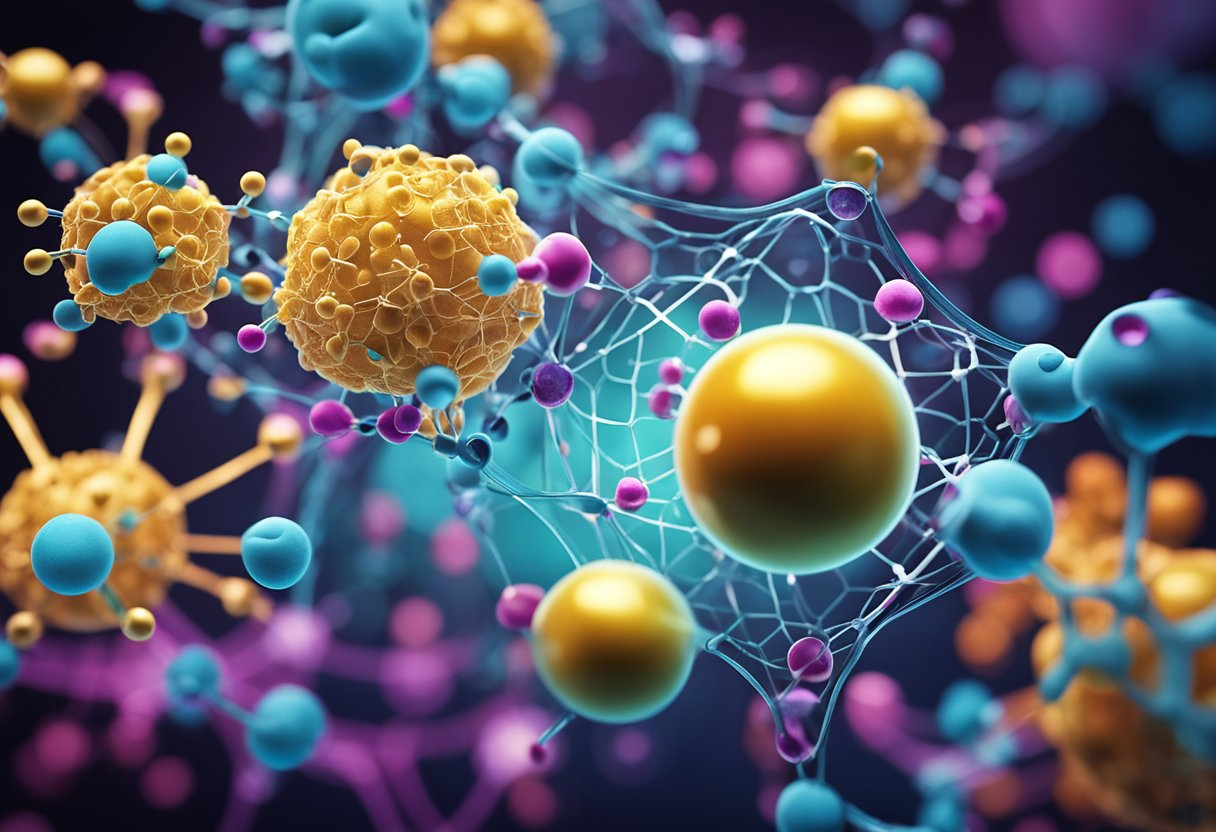Living a long, healthy life starts with a strong metabolism – the two are inextricably linked. Two crucial factors – how we generate energy and our likelihood of getting sick – are intimately connected. Metabolic health is defined by optimal levels of five key markers: blood sugar, triglycerides, HDL cholesterol, blood pressure, and waist circumference, without medication use.

Metropolitan pundits and scientists alike are abuzz with the recent revelation that our understanding of metabolism and aging was, until now, woefully outdated. Contrary to popular opinion, metabolism doesn’t necessarily slow down with age . What does it mean to grow older with vitality? This remarkable finding answers that question, ushering in a new era of robust health for seniors everywhere.
Your daily habits can literally flip a metabolic switch, sending your body down a path of either peak performance or sluggish inactivity. How we eat, move, sleep, and manage tension determines how our bodies perform from day to day. With every smart choice, you bring yourself closer to a vibrant, long life – it all starts with making conscious decisions about your daily routine.
Let’s distill it down to the most important points.
- Metabolic health encompasses a multitude of elements that stretch far beyond the numbers on your scale or BMI score.
- Your daily choices, no matter how small they may seem, all add up to either support or hinder your body’s metabolic function and ultimately, your life expectancy.
- The payoffs of healthy metabolism are clear: you’ll be less likely to develop diseases that typically strike as we get older.
Metabolic health starts with the basics – we’re talking how your body uses energy, what vitamins it absorbs, and the like. Mastering these fundamentals can make all the difference in your overall wellness journey.

Being in top metabolic shape is the foundation upon which we build a lifetime of wellness and vitality. Everything from our digestion to our daily movements relies on a complex dance of multiple systems working together in harmony.
Defining Metabolic Health
Metabolic health is about how well our bodies process and use energy from food. It’s measured by five main markers: blood sugar, triglycerides, HDL cholesterol, blood pressure, and waist size.
A person with good metabolic health has these markers in the right range without needing medicine. For women, a healthy waist size is less than 35 inches. For men, it’s less than 40 inches.
Blood sugar levels should be below 100 mg/dL when fasting. Your body sends out warning signs when something’s amiss, and these markers are like little flags that pop up when insulin resistance or other issues are lurking beneath the surface.
Core Components of Metabolism
Metabolism includes all the chemical processes that happen in our bodies to keep us alive. The main parts are:
- Digestion: Breaking down food into nutrients
- Absorption: Taking in nutrients from food
- Transportation: Moving nutrients to cells
- Energy production: Making ATP, the body’s fuel
- Waste removal: Getting rid of what we don’t need
Insulin plays a big role in metabolism. Cells get the glucose they need from the blood, thanks to this process. When insulin’s messages start to fall on deaf ears, cells stop listening, and the consequences can be far-reaching. A slow or faulty metabolism can translate into persistent fatigue, brain fog, and a spectrum of chronic health issues that make life an uphill battle. Conditions like type 2 diabetes come with their own set of challenges.
Importance of Metabolic Flexibility
Metabolic flexibility is the body’s ability to switch between using different fuel sources. A flexible metabolism can burn both fat and carbs for energy as needed.
With flexibility on your side, you can say goodbye to rollercoaster blood sugar levels and hello to a day filled with sustained energy, free from those dreaded slumps. But wait, there’s more – this powerhouse also lends a helping hand. Getting a handle on your weight means making peace with your body and its quirks, then using that self-awareness to fuel positive, sustainable transformations. Your body’s health is on the line here, every aspect of it.
To improve metabolic flexibility :
- Eat a balanced diet with protein, healthy fats, and complex carbs
- Exercise regularly, including both cardio and strength training
- Get enough sleep and manage stress
People with good metabolic flexibility often have better insulin sensitivity . Insulin works like a charm in their systems, keeping blood sugar levels in perfect balance.
Aging and Metabolic Health

Aging affects our body’s metabolism in many ways. The way we convert energy evolves over time, and this natural process can either buoy or hinder our health as we grow older.
Metabolic Changes with Age
As we age, our metabolism slows down . This happens because we lose muscle mass and gain more fat. At rest, our metabolisms sputter, burning off calories at a sluggish pace.
Older adults often have higher blood sugar levels. Cells start to tune out insulin’s signals, becoming less responsive over time. The liver and muscles also store less glucose.
Digestion can slow down with age. When this is the case, you may find yourself facing a battery of nutritional shortcomings that can really add up. The body might absorb fewer vitamins and minerals from food.
Aging and Hormonal Changes
Hormone levels shift as we age. Your metabolism and body composition are subtly, yet significantly, altered.
Growth hormone decreases with age. Here’s the magic maker: a hormone that flips the switch on muscle development and simultaneously turbocharges fat loss. You’ll notice a flip-flop effect when levels are low: fat accumulation goes up, while muscle tissue dwindles.
In women, estrogen drops during menopause. Spare tires often expand, especially around the midsection. One potential consequence is that it increases the likelihood of heart disease setting in.
Men experience a gradual decline in testosterone. What happens next is that your muscle tone dwindles, and excess fat starts to accumulate. And let’s not forget the potential hit to your mood and energy – it’s a double whammy.
Aging and metabolism – two functions deeply rooted in our genetic identity, influencing every aspect of our lives.
The hidden architects of our biology, our genes, seem to have a sneaky influence on how we age and our metabolic machinery shifts gears with each passing year.
Some people have genes that help them live longer and stay healthier . certain genes are thought to possess a shield-like quality, deflecting the advancements of age-related diseases.
Centenarians – people who’ve reached the remarkable age of 100 or more – are under the microscope as scientists strive to understand what’s behind their extraordinary longevity. People who live a long time often inherit certain genes that keep their metabolism in top shape.
Certain genes affect how our bodies respond to diet and exercise . Aging brings its own set of physiological adjustments, impacting our body composition, muscle mass, and metabolic functions.
There’s a direct connection between the food you eat and how your metabolism hums along. It’s a critical relationship that’s essential to understand.

Metabolism is heavily influenced by the food choices we make every day, setting us up for success or otherwise. Metabolic functions like energy production and regulation are closely tied to the nutrients we consume, making every bite count.
Macronutrients and Metabolic Response
Carbohydrates, proteins, and fats each trigger different metabolic responses. Carbs raise blood sugar quickly, causing insulin release. What’s generated here can be stored for later and used when needed.
Proteins require more energy to digest, increasing metabolic rate slightly. Muscles get a big boost when these helpers are around – metabolism kicks into high gear as muscle mass increases.
Fats slow digestion and provide steady energy. They don’t spike blood sugar but can increase fat storage if eaten in excess.
What makes up your daily menu is more formally known as diet composition. Hormone levels take a hit, and enzyme activity goes haywire. What happens when your body encounters calories and nutrients is heavily influenced by this key player, and it’s what sets the tone for a healthy metabolism and vital energy levels.
Fat’s metabolism spotlight: a dietary deep-dive.
In the intricate dance of metabolism, dietary fats are more than just mere spectators – they’re key performers that drive critical processes. Healthy fats like omega-3s do a body good, supporting better metabolic health all around. Others, like trans fats, may harm it.
Healthy fats support hormone production and cell function. They also help absorb fat-soluble vitamins.
Eating fat doesn’t automatically lead to weight gain. The body can use it for energy through lipolysis , breaking down stored fat.
Forget the myth that all fat is bad; a diverse fat intake is vital for well-being. When you overdo it on saturated fats, you’re essentially welcoming inflammation and metabolic problems into your life.
Caloric Restriction and Metabolic Adjustments
Caloric restriction involves reducing food intake without causing malnutrition. This sparks a chain reaction of metabolic shifts.
The body may lower its resting metabolic rate to conserve energy. Losing weight can become a serious grind when progress stalls.
Calorie cutting can improve insulin sensitivity and reduce inflammation. Metabolic health stands to benefit from the positive impacts of these factors.
Periodic fasting or time-restricted eating might offer similar benefits. These approaches alter when we eat, not just how much.
Sustained caloric restriction might slow aging processes. Calories are counted, but so should nutrients; after all, a healthy body relies on more than just fewer bites.
Physical Activity: A Key for Metabolic Function

Regular physical activity plays a crucial role in maintaining good metabolic health . What goes on behind the scenes? This hormone’s presence – or absence – plays a huge part in whether our muscles can efficiently use energy and our metabolism runs smoothly. Let’s explore how different types of exercise impact our metabolism.
Exercise and Insulin Sensitivity
Physical activity improves insulin sensitivity , helping cells respond better to insulin and use glucose more effectively. This effect can last for hours or even days after exercise.
Aerobic activities like walking, jogging, or cycling are especially good for boosting insulin sensitivity. Muscle tissue is the greatest glucose sink, and exercising these muscles helps lower blood sugar levels naturally.
Even short bursts of activity can help. Taking a 10-minute walk after meals can lower blood sugar spikes.
Resistance Training and Muscle Metabolism
Resistance training, such as weightlifting, has unique benefits for metabolism. Muscle mass matters because it’s packed with active cells that require fuel to function.
It’s simple math: more muscle equals a faster resting metabolism, and that means your body is burning calories like crazy even when you’re sitting still. Whether you’re on the move or stuck on the couch, this bonus effect helps you incinerate more calories.
When you commit to a resistance training routine, your muscles start to hum like a well-oiled machine, importing and processing glucose with ease. It increases the number and efficiency of glucose transporters in muscle cells.
Two to three resistance training sessions per week can significantly improve metabolic health.
Consequences of a Sedentary Lifestyle
A sedentary lifestyle negatively impacts metabolic health . Prolonged sitting reduces muscle activity and lowers metabolic rate.
Lack of physical activity can lead to:
- Decreased insulin sensitivity
- Reduced muscle mass
- Increased risk of type 2 diabetes
- Higher likelihood of obesity
Even small amounts of movement can help. Standing up and walking for a few minutes every hour can offset some negative effects of sitting.
By making exercise a habit, you can sidestep these nasty consequences altogether. Aim for at least 150 minutes of moderate-intensity exercise per week.
How much of your body is made up of lean muscle and how much is fat? Get the answer and take the first step towards a stronger, leaner you.

Body composition plays a key role in metabolic health and longevity. As we age, our bodies become intimately acquainted with the harmony – or discord – between fat and muscle mass.
Body Fat Distribution and Metabolic Risk
Body fat distribution greatly impacts metabolic health. Not all body fat is equal. Central adiposity, or fat around the midsection, poses higher risks than fat in other areas.
Visceral fat, which surrounds internal organs, is particularly harmful. A heightened risk of metabolic disorders and cardiovascular disease lurks in the shadows.
To get a read on risk, waist circumference is the number doctors look to first. A high waist-to-hip ratio indicates excess central fat.
Carrying extra weight in your middle can offset your body’s chemistry, but the right food and fitness plan can turn things around. Reducing belly fat, even just a little, can bring significant advantages.
Sarcopenia and Metabolic Considerations
Sarcopenia is the loss of muscle mass and strength with age. Metabolic health is influenced in multiple ways by this factor.
Muscle tissue burns more calories than fat, even at rest. As muscle mass decreases, metabolism slows down.
Unless you rebalance the scales, a consistent caloric surplus will likely translate to weight gain and an upward trend in body fat.
Sarcopenia also reduces insulin sensitivity. This makes it harder for the body to process sugar, increasing diabetes risk.
Regular strength training can help prevent and even reverse sarcopenia. Adequate protein intake is also crucial for maintaining muscle mass.
The Interplay Between Muscle and Adipose Tissue
Muscle and fat tissue don’t just exist side by side. The way they relate to each other surprisingly affects how healthy we are as a whole.
Fat cells, typically stored just beneath our skin, are more than just unwanted bulges – they hold secrets to our metabolic system. Muscle function gets a boost – or a throttle – from the hormones it cranks out. Inflammation and insulin resistance can gets a boost from these hormones, and that’s not good news.
Muscle tissue, in turn, releases substances that affect fat metabolism. Packing on muscle mass can drive down body fat percentage over the long haul.
The ratio of muscle to fat is more important than total body weight. A person with more muscle and less fat will typically have better metabolic health.
There’s a delicate balance to strike, and regular exercise – the kind that pushes you, like resistance training – is the key to achieving it. A diet rich in protein and nutrients supports both muscle growth and fat loss.
Stopping disease in its tracks starts with tackling metabolic disorders head-on.

Health problems can snowball quickly if your metabolism isn’t functioning properly. The way our bodies fuel themselves is fundamentally altered by their impact. Block debilitating conditions from taking hold in the first place. Living a life that’s both long and healthy boils down to getting this right.
Type 2 Diabetes and Metabolic Implications
Type 2 diabetes is a common metabolic disorder. It happens when the body can’t use insulin well. This bumps up sugar levels in the blood.
Cardiometabolic conditions like diabetes can make COVID-19 worse. People with diabetes are more likely to get very sick from infections.
Type 2 diabetes can cause:
- Heart disease
- Kidney problems
- Eye damage
- Nerve pain
Early detection is important. Regular check-ups can help catch diabetes before it gets worse. A combo of wholesome eating and regular exercise can be a strong defense against type 2 diabetes – so make the smart choice and prioritize your health.
Obesity and Its Complications
Obesity is more than just being overweight. Trouble can start with this one health issue, but it rarely stops there – it often sets off a chain reaction of problems.
Abdominal obesity is a key sign of metabolic syndrome. This means having too much fat around the waist.
Obesity can cause:
- High blood pressure
- Heart disease
- Some types of cancer
- Sleep apnea
Losing weight can be hard, but it’s worth it. A minor weight loss can add up to major health improvements. Eating less and moving more are good ways to start.
Lifestyle Choices and Metabolic Health
The choices we make every day affect our metabolic health. A series of minor adjustments can gradually snowball into something remarkable.
Good habits for metabolic health:
- Eat plenty of fruits and vegetables
- Get regular exercise
- Don’t smoke
- Limit alcohol
Staying active as we age is very important. Muscle loss and weight gain don’t stand a chance when you make this a priority.
Metabolic health can take a serious hit when stress takes hold. Stay calm and collected – it’s time to find your stress solutions. Think of sleep as metabolic health’s silent partner – without it, your body’s ability to function at its best starts to break down.
Environmental and Lifestyle Factors Affecting Metabolism

Our surroundings and daily habits play a big role in how our bodies process energy. The rhythm of our metabolism can be majorly disrupted by a combination of factors – think stress, sleep quality, diet, and pollution.
The Impact of Stress and Sleep on Metabolism
Stress and poor sleep can slow down metabolism. When we’re stressed, our bodies make more cortisol. Having too much of this hormone can lead to a sluggish metabolism and unwanted pounds.
When bedtime comes too late, the next day’s productivity suffers. This creating trouble too. This can override our natural hunger cues, causing us to stuff ourselves or reach for snacks we know we shouldn’t have. Skimping on shut-eye sends your hormones haywire. Hunger and fullness cues are under their command.
To keep metabolism healthy:
- Find ways to relax and manage stress
- Aim for 7-9 hours of sleep each night
- Keep a regular sleep schedule
Nutritional Environment and Access to Healthy Options
What we eat depends a lot on what food is around us. Some areas have more fresh fruits and vegetables. Others might only have fast food nearby.
Crunching on fresh fruits and veggies becomes a habit when you surround yourself with healthy options. Aiding healthy habits becomes a whole lot simpler. This helps keep metabolism working right. Eating whole foods gives our bodies the right fuel.
Tips for a better food environment:
- Shop at local farmers markets
- Grow some of your own vegetables
- Keep healthy snacks at home and work
The Influence of Toxins and Pollutants
Chemicals in our environment can harm our metabolism. You’d be surprised where these toxins come from: it’s the very air we breathe, common cleaning products, and the plastic stuff we use daily.
The liver works hard to remove these harmful substances. But too many toxins can overwork it. As your metabolism slows, health issues start to creep up – it’s a warning sign you shouldn’t ignore.
To reduce toxin exposure:
- Use natural cleaning products
- Filter your drinking water
- Eat organic foods when possible
- Avoid plastic food containers
By making small changes, we can create a healthier environment for our metabolism.
Get the scoop on our most asked questions – and our expert answers – right here.

Metabolism plays a key role in health and longevity. As we age, our lifestyle and genetic makeup team up to shape our metabolic health in subtle but significant ways. Knowing how to care for your metabolism can make all the difference as the years go by.
What’s the deal with age and metabolism – do the two somehowintersect?
Metabolism changes with age . Recent research shows metabolism peaks earlier and slows later than previously thought. It stays steady from ages 20 to 60 for most people. After 60, it declines about 0.7% per year.
As we age, what specifically happens within our metabolism that causes things to shift?
Muscle mass fizzles out over time, a harsh reality that comes with the territory of aging. This can lower metabolic rate. Metabolism takes a hit when hormone levels fluctuate. Insulin sensitivity may decrease. Our bodies start to get a little clogged, like a drain that’s seen better days, when it comes to nutrient processing.
Metabolism and longevity – what’s the crucial link between these two vital aspects of our overall health?
A Fuel your daily grind with a metabolic engine that runs smoothly, efficiently, and packed with vigor. Acts as a body function stabilizer, keeping everything running smoothly. Cell repair and energy production get a huge lift from this, supercharging your body’s natural ability to fix and refuel itself. Having a robust metabolic system is closely tied to avoiding illnesses commonly associated with getting older. From diabetes to heart disease, and even certain cancers, these health issues are connected.
A revved-up metabolism is like a well-oiled machine – but what are the key signs it’s running smoothly?
Healthy metabolism milestones begin with clear signs of balance in your body’s internal chemistry. Blood sugar, triglycerides, and blood pressure – the trifecta of health metrics that can make all the difference. HDL cholesterol and waist size are also important. Normal levels of these markers without medication use indicate good metabolic health.
At what stage in life does metabolism typically begin to slow, and why?
Metabolism stays stable for most adults until about age 60. After 60, it slows gradually each year. A direct result of this transformation is the loss of muscle bulk and a noticeable drop in cellular energy output. Hormonal shifts also play a role.
What can be done to maintain metabolic health as one ages?
Want to keep your muscles strong and your metabolism fired up? Regular exercise can make all the difference. Physical fitness boosts are just a jog away with cardio workouts. For a healthy metabolism, it all boils down to this one essential element. Eating a rainbow of foods gives your body the fuel it needs to run smoothly. A balanced diet is like putting the right mix of gasoline in your car – it helps all the parts work together seamlessly. Think of this health-giving dynamo as metabolism’s ultimate partner in crime – with an unmatched store of vital nutrients, it forms an unstoppable duo, ensuring a supercharged you. A well-rested body and mind, free from stress, lays the groundwork for a smoothly running metabolism.